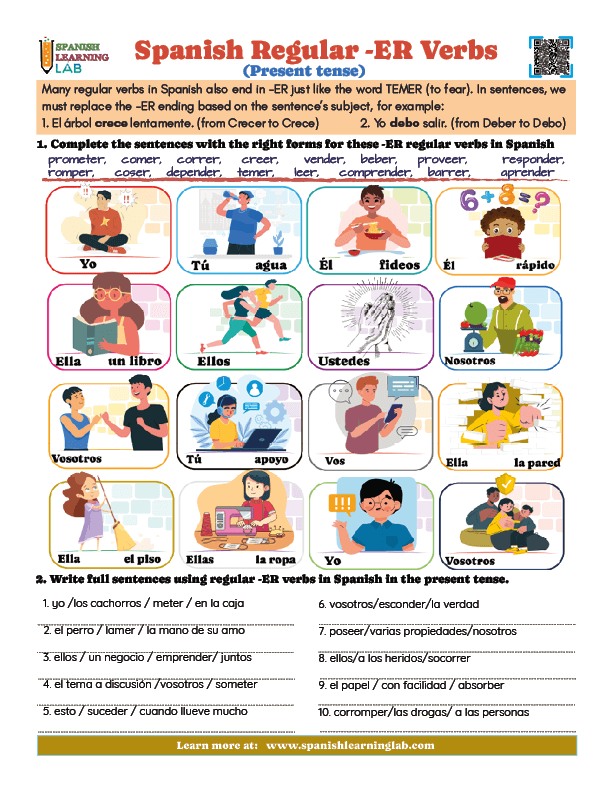¡Hola! Thanks for learning Spanish with us. This time, we are sharing another great resource to practice the grammar rules for Spanish regular -ER verbs in the present tense, similar to the one about -AR regular verbs we shared before. Let’s start…
Directions:
Students could work individually or in pairs to solve the exercises on this worksheet. They can also solve it online through the interactive quizzes in this page.
First, this worksheet explains that for regular verbs ending in -ER, just like the word TEMER (to fear), we must replace the -ER ending based on the sentence’s subject, for example:
- El árbol crece lentamente. (The tree grows slowly. – Here, the main verb is “CRECER” and the subject is “él”, so we must say “él crece“)
- Yo debo salir. (I must go out. – Here, the main verb is “DEBER” and the subject is “yo”, so we must conjugate the verb as “yo debo” based on the rules)
To solve the first exercise, students should look at the drawings in the worksheet, check the list of regular -er verbs and decide which one fits in better for the picture. After that, they must conjugate this verb for that specific pronoun to make complete short sentences. To solve the second exercise, students must read the clues, unscramble the sentences in some cases and write them down using the correct conjugation rules for these verbs in the present tense.
Worksheet information:
Level: Beginners
Skill: Grammar
Related lessons:
- Spanish Subject Pronouns: Chart, Sentences and Practice
- Regular Verbs in Spanish: Conjugation, List and Sentences
- How to Make Basic Sentences in Spanish
- Conjugating -ER Regular Verbs in Spanish (Present) – PDF Worksheet

Solve it online!
Read the instructions carefully and solve the exercises on the worksheet through the interactive quiz below.
Exercise No. 1
Complete the sentences in the flashcards with the correct forms of the -ER regular verbs in Spanish in the list.
prometer, comer, correr, creer, vender, beber, proveer, responder, romper, coser, depender, temer, leer, comprender, barrer, aprender
Exercise No. 2
Write full sentences using regular -ER verbs in Spanish in the present tense based on the clues available.
